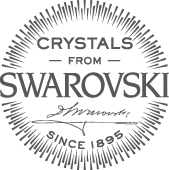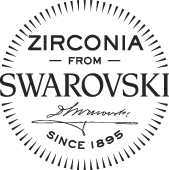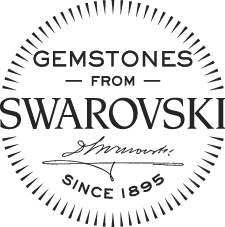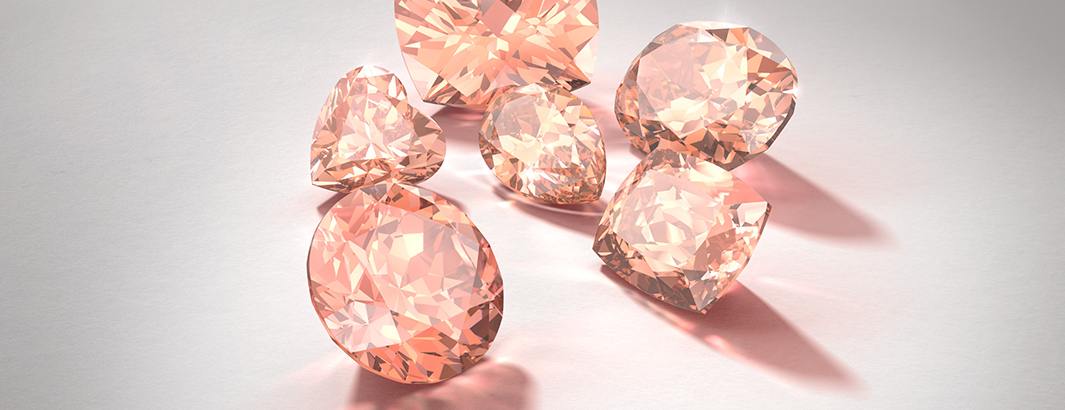- Bioplast®
-
Bioplast® is a trademarked medical grade plastic. It was created in 1998 in Austria and is still produced in Tyrol. It was formerly sold under the name of PMFK until in 2003 the name Bioplast® was trademarked.
Bioplast® is Biocompatible, flexible and can be cut to any length and threaded by any metal ball closure.
Bioplast® adjusts to the body temperature and not to the outside air temperature, like metals. Therefore, people getting pierced with Bioplast®, have less swellings and infections. The healing process with Bioplast® is faster than with any other materials. No allergic reactions (no nickel)
Bioplast® can be sterilized by autoclave. It also has a competitive price and comes in 8 fancy colors, can be combined with SS316L or Titanium.
Bioplast® is not visible in X-Rays if used on its own without metal attachments.
Bioplast® is the best material for initial piercing.
It is available in the following colors:
View Certificate
- Black Steel
-
Black PVD (Physical Vapour Deposition) coating is applied onto SS316L body jewelry.
The jewelry is coated in a heated chamber under high vacuum.
Electric voltage applied will form a plasma in the chamber and the introduction of various gases produces an ion bombardment.
This bombardment atomizes the cathode material into tiny substances, which are deposited on the jewelry.
The result is a hardened layer, which is biocompatible. It can be autoclaved.
- Brass
-
Brass is used for its bright gold-like appearance and is popular in piercings for its tribal look. Brass Piercings are used by nature tribes all around the world.
We use a brass alloy from copper, zinc and silver which is free of any toxic elements such as nickel, lead and cadmium.
We do not recommend brass for initial piercings and they may cause irritation for some people.
Brass data sheet.
- Brass Jewelry guidelines
-
First of all, brass jewelry aren't giving the same allure as if they are gold, silver or rose gold plated. What we look for in a brass jewel it's that special brown vintage look of tribal jewelry.
Yes, it does leave a green stain where jewelry was worn, but that stain is usually a result of a metal in the jewelry reacting with your skin — or something on your skin, such as hand lotion.
When the acids on your sweaty skin (or in your lotion) cause the copper in the jewelry to corrode, the process creates copper salts. These blue-green compounds can leave a mark on your skin in that iconic shade we call "Statue of Liberty Teal."
Other metals can produce similar effects: The silver present in sterling silver, and used as an alloy in a fair amount of gold jewelry, can oxidize when it comes in contact with skin. This causes tarnishing and can leave you with a dark-green or black stain. Although these marks are often associated with cheaper jewelry, they can happen with the pricey stuff, too.
Stainless steel and white gold are usually immune.
The good news is that even the toughest tarnished brass piece, we can simply clean it by leaving it for up to 30 minutes (if very tarnished) in just Ketchup and water. It will all come as new.
Taking your jewelry off before washing with soap will also reduce the chances of going green.
- Cadmium
-
Since December 2011 there is a new CADMIUM restriction law in the European Union. It states that the CADMIUM in metal parts of jewelry and imitation jewelry articles has to be not more than 0.01%.
Our Jewelry passed the tests and certificates can be downloaded below.
Download Certificates:
All Certificates or
download the latest European Directive regarding the use of Cadmium for Body Jewelry.
- Cubic Zirconia
-
Cubic Zirconia is currently the most popular substitute to a diamond because to the untrained eye they look identical. Cubic Zirconia or CZ as it is referred to is made from zirconium dioxide a different material than diamonds, which although a different chemical composition comes closer than any other gem to matching the characteristics of a diamond. Natural CZ was first discovered in 1899 but it wasn’t until the late 70’s that man made CZ first came into production for use in jewellery. CZ on first impression looks just like a diamond but under close inspection there are differences, it has a gravity of between 5.6 and 6.0 which means it’s 1.6 times the weight of a diamond. It has a hardness of 8 on the Mohs scale, a refraction index of 2.176 and a dispersive power of 0.060, which means that it’s not as hard as a diamond, it’s slightly less sparkly but displays more prismatic fire which means more colour sparkles within the gem. Another point to note is that natural diamonds display impurities which CZ doesn’t its also clear in colour which most diamonds aren’t, but they can be coloured by adding metal oxides in the production process. Unlike diamonds CZ are good thermal insulators which mean they become warm but can’t withstand the same kind of heat a diamond can, which is one test that is used to distinguish diamonds from CZ. Caring for CZ is important because they are more brittle than diamonds and susceptible to wear and tear such as chipping and scratches over time.
- Enamel
-
Enamel resin, also called “epossodic resin”, has various outstanding properties:
It is smooth, hard, chemically resistant, durable, scratch resistant, long-lasting color, easy-to-clean, and cannot burn.
When it hardens, it creates a smooth, durable coating on metals.
Enamel is not paint, so it does not fade with UV light.
View Certificate
- GOLD
-
Gold is considered as one of the most precious metals in the world and is appropriate for initial piercings if it is 14k or 18k. Gold higher than 18k is too soft for body jewelry because it can easily be scratched.
G18K- stands for 18karat (750 Gold) and G14K- for 14karat (585 Gold) yellow Gold.
Yellow Gold Alloy Data Sheet
RG18K- stands for 18karat (750 Gold) Rose gold.
Rose Gold Alloy Data Sheet
WG18K- stands for 18karat (750 Gold) White Gold which is Rhodium Plated
White Gold Alloy Data Sheet
Nickel Release Test for White Gold
Wherever there is enough surface space, we mark all our Real Gold items with either 750 (for 18 karat) or 585 (for 14 karat).
Additionally, we also mark our Swiss Responsibility Mark ("Verantwortlichkeitsmarke") which guaranties the gold content of our products.
Download "Verantwortlichkeitsmarke"
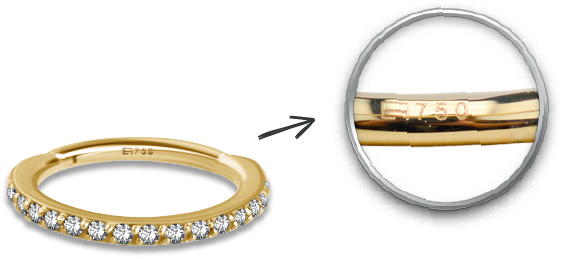
- GOLD PVD
-
24K real Gold is coated using a PVD (Physical Vapor Deposition) process.
The jewelry is coated in a heated chamber under high vacuum. Electric voltage applied will form a plasma in the chamber and the introduction of various gases produces an ion bombardment. This bombardment atomizes the cathode material (24k real Gold) into tiny substances which are deposited on the jewelry. The result is a hardened layer, which is biocompatible. It can be autoclaved.
- Organics
-
Organic body jewelry is made from various natural materials like water buffalo horn, water buffalo bone and different kinds of wood. Organic materials were used historically by many cultures.
Natural materials are not suitable for unhealed piercings or for wear while stretching existing ones. They are sensitive to changes in heat and humidity. Thus autoclaving, use in saunas or hot display cases (light) is not recommended.
Natural materials can absorb oils and sweat from the skin and therefore reduce odors.
- ROSE GOLD PVD
-
Real Rose Gold Alloy is coated using a PVD (Physical Vapor Deposition) process.
The jewelry is coated in a heated chamber under high vacuum. Electric voltage applied will form a plasma in the chamber and the introduction of various gases produces an ion bombardment. This bombardment atomizes the cathode material (Real 14-22K Rose Gold alloy) into tiny substances which are deposited on the jewelry. The result is a hardened layer, which is biocompatible. It can be autoclaved.
- Silver
-
Silver do not need much explaination. We use 92.5 Sterling silver. Most of our items are rhodium plated, which protects the silver from tarnish and makes it more shiny.
For our Swiss customers:
The CE Logo we stamp on our jewelry is now registered as a Swiss RESPONSIBILITY MARK (No. 10545).
View Certificate.
- Surgical Steel 316
-
SS316L is a surgical implant grade, which is the most used material for Body Jewelry. The two most common standards that apply to body jewelry made of steel are ASTM F138 and ISO 5832-1 which describe the qualities of steel for surgical implants.
The element in stainless steel that causes allergic reactions in some people is nickel. Polishing the jewelry to a mirror like luster results in a protective layer of chromium oxide, which reduces the release of the Nickel content into the tissue. Surgical Steel can be sterilized in an autoclave.
Download Certificate
Download Nickel Release Certificates:
or
download the latest European Directive regarding the use of Nickel for Body Jewelry.
-
-
What is Swarovski® Crystal?
Swarovski® crystals are man-made gems manufactured in Austria. In 1892, Daniel Swarovski invented a machine for making precision-cut, beautiful, high quality lead glass crystals using quartz, sand, and minerals. The exact proportions of these raw materials has remained a company secret. This specialized manufacturing process ensures the highest possible degree of precision which produces brilliant crystals. For five generations, the Swarovski family has continued the tradition of making the most recognized crystals in the world out of their factory in Wattens, Austria.
Why are Swarovski® crystals more expensive than glass?
The method of production and processing of raw resources are important factors in the quality of finished crystals. Swarovski uses only the finest materials to fashion faceted lead glass that is known around the world for its brilliance and value. Superior production, materials, cutting, and polishing are what set Swarovski crystals apart from other glass works. According to Swarovski, “Cutting hard materials such as crystal and gems, in such a way that they have a hundred identical facets in several directions, is a very complicated task; each direction of the reflected light must first be calculated by computer, then this has to be simulated in 3D, optimized and finally converted into control programs for complex machinery.”
View Swarovski® Certificate
- SWAROVSKI® CRYSTAL PEARLS
-
The pearls used in the Swarovski Fashion Jewelry collection are simulated pearls and are not natural. Crystal Pearls by Swarovski are pearls made with a crystal core. Their unparalleled harmonious and lustrous shimmer is achieved using a unique coating technology developed by Swarovski. It is the first production method in the world to combine the quality of a perfect crystal core with the exquisite beauty of a pearl coating. The innovative technology by Swarovski gives the pearl a mysterious glow, which appears to be radiating from within the pearl itself. The strictest quality controls help ensure the absolute flawlessness of each Crystal Pearl.
-
-
The stones we use under this name are SWAROVSKI® ZIRCONIA (not crystals). This Zirconia stones are cut and polished to perfection exclusively in Austria. They have all the characteristics of a real diamond with its exceptional cut and sheer brilliance. All stones are set by hand and items polished by hand.
www.swarovski-gemstones.com
Steel and Silver as Branding Partner from Swarovski®
Branding Partner Certificate for "DEVILHEART®"
SWAROVSKI ZIRCONIA
THE ATTRIBUTES
- The finest quality available today.
- Created using only the highest quality raw materials.
- Swarovski's Pure Brilliance Cut for Zirconia has 57 facets.
- Swarovski's Pure Brilliance Cut delivers the same level of brilliance as natural diamonds.
- The engraving guarantees that the zirconia stones are cut in accordance with the cutting parameters stated by the GIA as being 'ideal for diamonds'.
- Every single Pure Brilliance Cut Zirconia carries the exclusive Swarovski engraving, even down to a size of 0.8 mm.
- The perfectly balanced proportions of our stones enhance the brilliance and beauty of any jewelry.
- Zirconia has near-identical properties to diamonds in terms of brilliance, refraction and durability.
- Zirconia can withstand very high temperatures (2750° C) and can therefore be set like a genuine diamond.
- Zirconia can be applied to jewelry without the need for adhesives, making it extremely durable and ideal for everyday wear.
Click here for all our designs with SWAROVSKI® GEMS
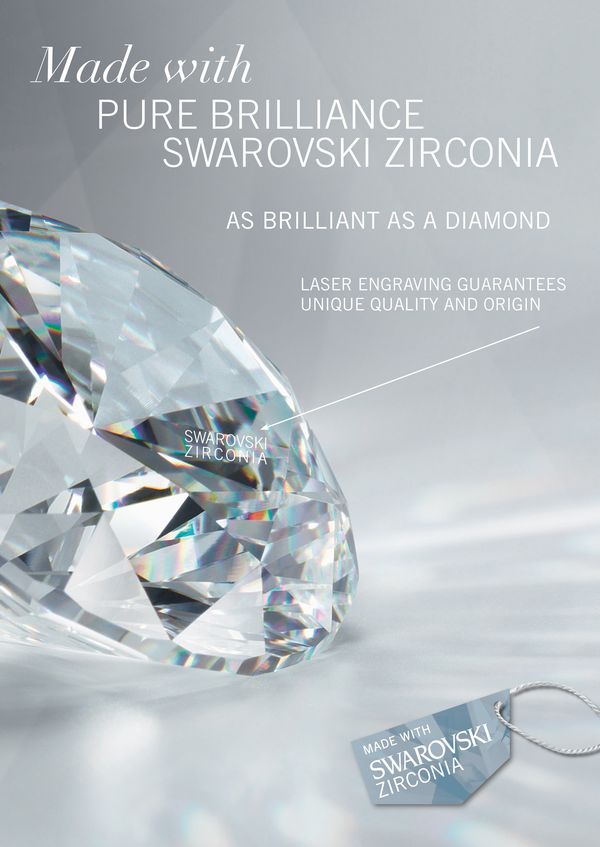
-
-
Each of our Genuine Gemstones reflects the quality, creativity, and technical precision that the name Swarovski has come to stand for. Our exceptional stones are skillfully cut from raw, natural materials, which in turn define the limitations and supply of our selected gemstone rough. Swarovski's Genuine Gemstones infuse the natural beauty of the stone with a new dimension of brilliance, providing creative inspiration for jewelry and watch design
-
SWAROVSKI® CREATED DIAMONDS
-
Lab created diamonds are 100% diamonds. The only difference is that the origin is a laboratory and not the earth. Swarovski Created Diamonds are identical to mined diamonds possessing the same chemical composition, hardness, brilliance and fire – just as a greenhouse-grown orchid is identical to one found in nature.
Created Diamonds are a responsible and environmental choice.
CUT
The cut of a laboratory created diamond is essential to its beauty. It is evaluated according to the parameters of Excellent / Very Good / Good and Fair. Swarovski Created Diamonds are available in the best quality, the Excellence and Very Good Cut.
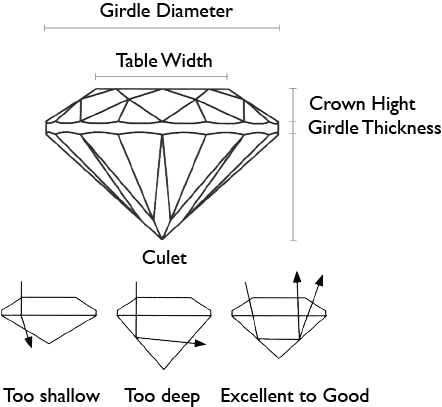
CLARITY
Clarity describs the purity of a laboratory created diamond.
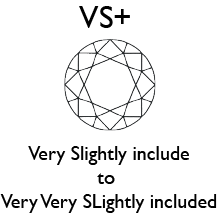
COLOR
Most diamonds use in jewerly range in color from colorless to slightly yellow

- Synthetic Opal
-
Synthetic opal (GIA: Polymer Impregnated synthetic opal) is impregnated in laboratory in around a year and has similar properties as that of natural opal. The main difference with natural opal is that the naturally occurring process has been sped up in the laboratory. Our synthetic opal is a beautiful opal with a perfect color dynamicity - revealed the beauty of Precious Opal.
|
Synthetic Opal (with resin) |
Natural Opal |
| Elements |
SiO2.nH2O+Resin |
SiO2.nH2O |
| Hardness |
4 |
3-5.5 |
| Specific Gravity |
1.80-1.90 |
1.98-2.20 |
| Heat Resistance |
130 degree C. |
100 degree C. |
Click here for all our designs with Synthetic Opals
- Titanium 6AL-4V-ELI, ASTM 136
-
Titanium is ideal for both initial body piercings and healed piercings as it is compliant with the EU Nickel Directive introduced in Europe in 2001. Because of its virtually 'Nickel Free' content Titanium has become one of the preferred materials used in piercing jewelry within the borders of the European Union.
Grade Ti6AL-4V, ASTM F136 is the specification for the alloy to be used for surgical implants. It is available in Highly Polished or Anodised Colours. Titanium is only half the weight of steel and twice as strong. Titanium can be sterilized in an autoclave.
Download Certificate
Download Titanium - Nickel Release Certificates
- UV Acrylic
-
Acrylic comes in many shapes and colors. It cannot be sterilized in autoclave and may crack, if soaked in disinfectant chemicals like alcohol or similar. It’s not suitable for initial piercing. The biggest advantage is it’s cheap price.
- Zircon Steel
-
Zircon Gold PVD (Physical Vapour Deposition) coating is applied onto SS316l body jewelry.
The jewelry is coated in a heated chamber under high vacuum.
Electric voltage applied will form a plasma in the chamber and the introduction of various gases produces an ion bombardment.
This bombardment atomizes the cathode material into tiny substances which are deposited on the jewelry.
The result is a hardened layer, which is biocompatible. It can be autoclaved.



